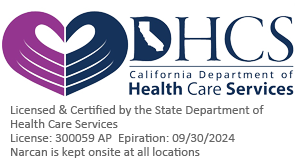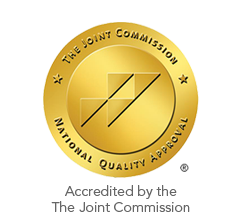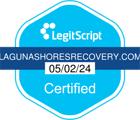PTSD and Substance Use Disorders
Understanding the complex symptoms that occur in post-traumatic stress disorder cases helps clients understand the impact it can have on their lives or the lives of their loved ones.
The symptoms of PTSD are placed in three distinct categories, and they may not appear for months or even years after a traumatic event has taken place.
- Intrusive thoughts
- Flashbacks or reliving the event while experiencing stress responses
- Re-occurring memories and dreams related to the event
- Physical signs of stress
- Becoming startled easily
- The feeling of being on edge
- Difficulty concentrating
- Sleep disturbances
- Irritability or aggression
- Impulsive or risky behaviors
- Lapses in memory around the traumatic event
- Poor self-esteem
- Cynical world views
- Feelings of blame, fear, shame, or anger
- Lost interest in past hobbies
- Difficulty enjoying life or having positive emotions
Symptoms of this multitude can be challenging to cope with, and individuals may attempt to self-medicate with drugs or alcohol. According to Current Psychiatry Reports, “Approximately half of individuals seeking SUD treatment meet criteria for current PTSD.”
The Impact of PTSD on Substance Use Disorders
Many substances like benzodiazepines, barbiturates, and alcohol are central nervous system depressants. Abuse of any of these can cause adverse effects like anxiety, depression, and sleep disturbances, further impacting avoidance symptoms of PTSD. Using stimulants like meth, cocaine, or prescription drugs like Adderall or Vyvanse can speed up the body and negatively impact cognition and the re-experiencing symptoms of PTSD.
The prevalence of co-occurring PTSD and SUD means that many with PTSD will need to get treatment for both disorders. Like SUD, the body can undergo wear and tear from repeated cycles of stress from PTSD. Suffering from both of these mental health disorders is dangerous, as they both impact a person’s physical and psychological states.
Once an individual becomes addicted to a substance, sobriety will not simply make PTSD go away. In recovery from drugs or alcohol, the appearance of PTSD can:
- Worsen the psychological symptoms of withdrawal
- Increase the likelihood of relapse
- Make maintaining a healthy, positive mindset in recovery more challenging
Be Brave. Get Help.
Treatments and Therapies
At Laguna Shores Recovery, we believe you cannot treat addiction without simultaneously treating the co-occurring disorders.
Therapies within dual-diagnosis treatment for PTSD and SUD may include:
- Psychotherapies such as cognitive-behavioral therapy (CBT) or dialectic behavioral therapy (DBT)
- Mindfulness exercises help clients tune into their bodies to approach their physical and mental needs in recovery
- Prolonged exposure therapy addresses triggers and stress responses around stimuli
- Psychoeducation educates clients on the impact their mental disorders have on their lives so they can pinpoint symptoms they experience
- Seeking Safety (SS) covers topics like decreasing risky behaviors, addressing negative emotions and self-doubt, asking for help, setting boundaries, and coping with triggers
According to one national epidemiologic study, 46.4% of individuals with lifelong PTSD also met the criteria for SUD. Therapy for PTSD has been shown to decrease the likelihood of relapse; however, treating SUDs without treating PTSD is a less effective method for reaching long-term recovery.
Laguna Shores Recovery Can Help
We integrate dual-diagnosis treatment into our program through an emphasis on mental health in group and individualized therapy. During detox and thereafter, our licensed physicians work around the clock on the psychological challenges experienced in the early stages of recovery.
Our clients are able to find healthy distractions from the uncomfortable physical and mental effects of recovering from addiction through experiential therapy such as yoga sessions, nutrition classes, and exercise.
Laguna Shores Recovery utilizes the effectiveness of a 12-Step program for recovery from addiction and co-occurring mental health disorders. A 12-Step program is meant to heal the spirit, and many different religious or spiritual views align with its teaching.
If you are suffering from the debilitating symptoms of PTSD and are self-medicating with drugs or alcohol to cope, you are not alone. Laguna Shores Recovery offers dual-diagnosis treatment to heal from the effects of SUD and PTSD and any other co-occurring disorder. Call us today to learn more about our individualized treatment plans at (954) 237-7730.

 Matthew Beck B.A, M.A, LMFT
Matthew Beck B.A, M.A, LMFT 


